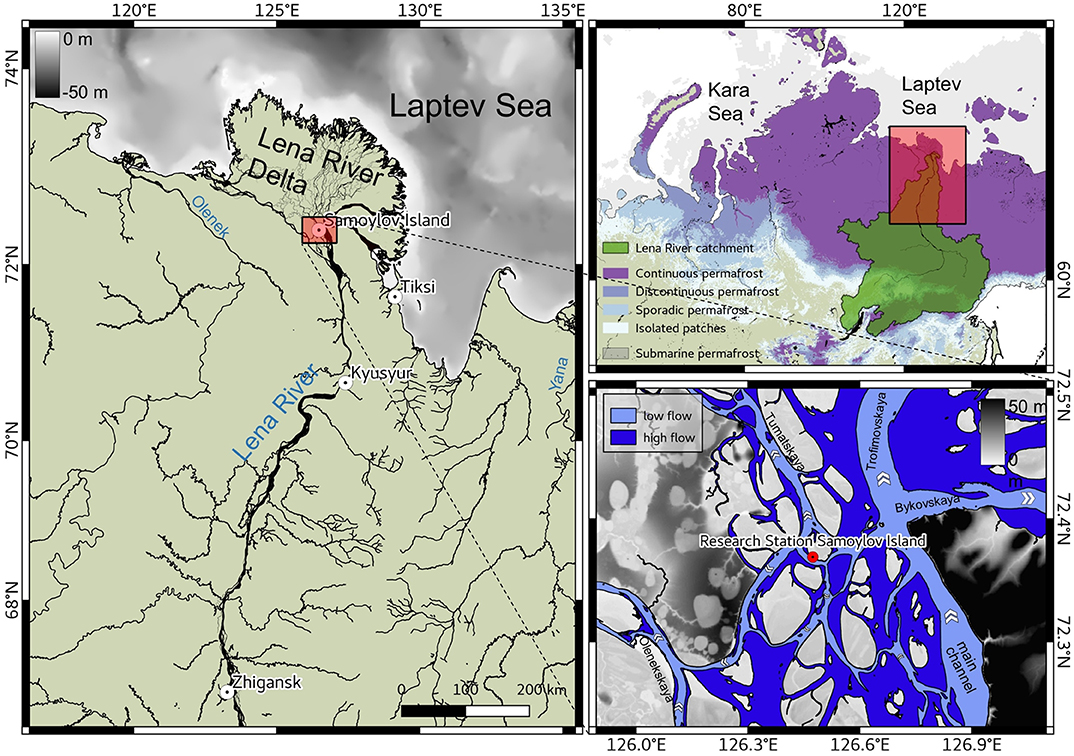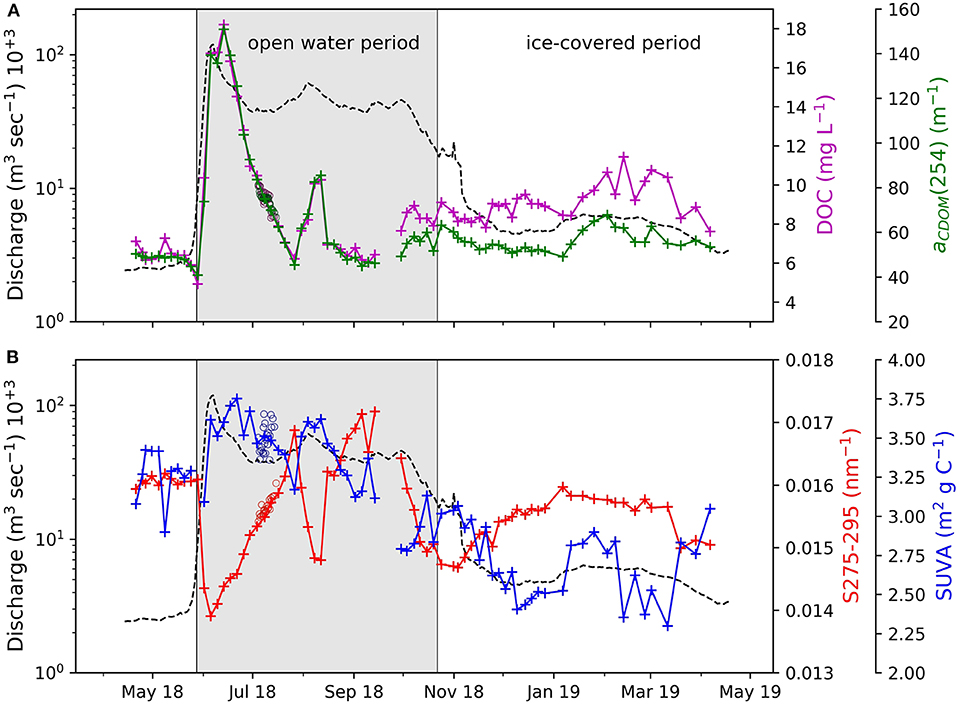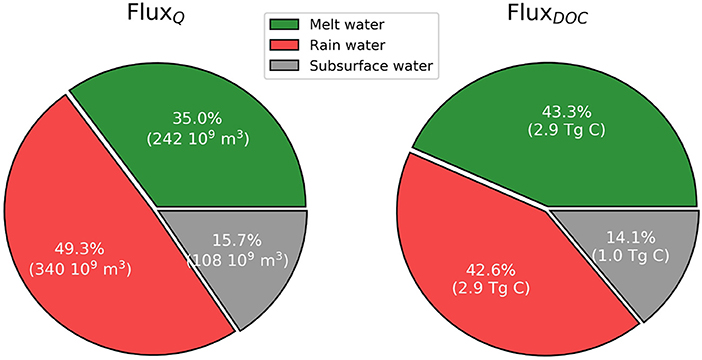Bennet Juhls of the Department of Earth Sciences, Institute for Space Sciences, Freie Universität Berlin, together with a group of collegues, published a paper containing the first results of the new Lena River sampling program at the Samoylov Station.This study uses data of the first complete year: April 2018 to April 2019.
Warming air temperatures, shifting hydrological regimes and accelerating permafrost thaw in the catchments of the Arctic rivers is affecting their biogeochemistry. Arctic river monitoring is necessary to observe changes in the mobilization of dissolved organic matter (DOM) from permafrost. The Lena River is the second largest Arctic river and 71% of its catchment is continuous permafrost. Biogeochemical parameters, including temperature, electrical conductivity (EC), stable water isotopes, dissolved organic carbon (DOC) and absorption by colored dissolved organic matter (aCDOM) have been measured as part of a new high-frequency sampling program in the central Lena River Delta.

The results show strong seasonal variations of all biogeochemical parameters that generally follow seasonal patterns of the hydrograph. Optical indices of DOM indicate a trend of decreasing aromaticity and molecular weight from spring to winter. High-frequency sampling improved our estimated annual fluvial flux of annual dissolved organic carbon flux (6.79 Tg C). EC and stable isotope data were used to distinguish three different source water types which explain most of the seasonal variation in the biogeochemistry of the Lena River. These water types match signatures of (1) melt water, (2) rain water, and (3) subsurface water. Melt water and rain water accounted for 84% of the discharge flux and 86% of the DOC flux.

The optical properties of melt water DOM were characteristic of fresh organic matter. In contrast, the optical properties of DOM in subsurface water revealed lower aromaticity and lower molecular weights, which indicate a shift toward an older organic matter source mobilized from deeper soil horizons or permafrost deposits. The first year of this new sampling program sets a new baseline for flux calculations of dissolved matter and has enabled the identification and characterization of water types that drive the seasonality of the Lena River water properties.

The work was supported by Nunataryuk, the Helmholtz Association in the framework MOSES (Modular Observation Solutions for Earth Systems) and CACOON (Changing Arctic Carbon cycle in the cOastal Ocean Near-shore).
All information has been taken from the paper itself: https://doi.org/10.3389/fenvs.2020.00053


